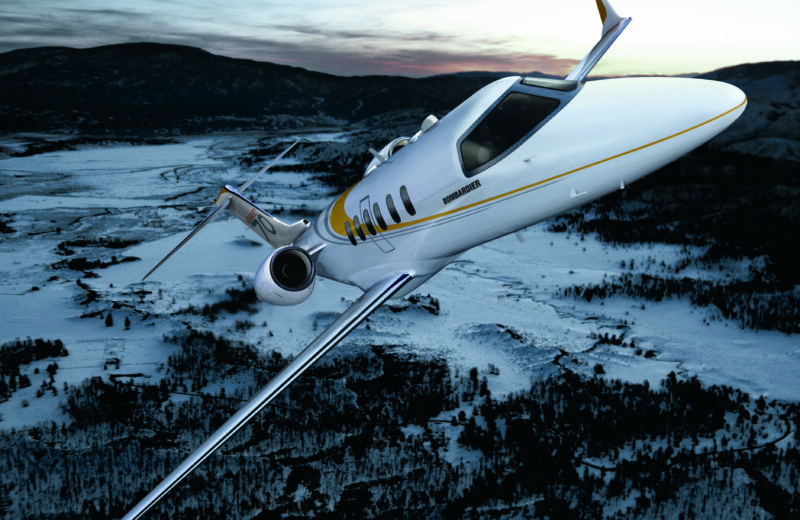Bombardier Learjet 70: Buyer’s and Investor’s Guide

A guide for buyers of the Bombardier Learjet 70 range of light business jets from the Canadian manufacturer.
Pros
A quick jet with a high-quality cabin.
Cons
Heavier, less capable and more expensive to operate than other light jets.
_________________________________________________________________________________________________________
Flying
Launched at EBACE in 2012, the Learjet 70 is an updated version of the popular Learjet L40XR. Improvements include winglets, aerodynamic improvements and a new avionics suite (Garmin 5000 based Bombardier Vision flight deck).
With four passengers on board, the Lear 70 can fly 2,060nm. This range allows passengers to fly throughout Europe without needing to refuel. However, flying coast-to-coast in the US will require a fuel stop.
The Learjet 70 can seat a maximum of seven passengers – two less than the slightly larger Learjet 75. In return for the reduced passenger capacity, the Learjet 70 gains just 20nm of additional range. As such, the Learjet 75 has proved to be the more popular of the two aircraft.
Maximum cruise speed is Mach 0.81 (534mph), but Bombardier says the typical cruise speed is Mach 0.76 (583mph) – providing a better compromise between speed and range.
Weight is what prevents the Learjet 70 being a true contender in the light jet market. A higher operating weight means the aircraft needs more momentum to take off – and a longer runway to do so. This limits the airports that passengers can use when compared to other light jets.


Other light jets can land at airports with smaller runways, allowing customers to land potentially closer to their destination.
Travelling
With a height of 4ft 11in, width of 5ft 1in and length of 17ft 8in, the cabin is slightly smaller than direct competitors such as the Phenom 300E and the PC-24.
The standard cabin configuration comprises of double club seating located in front of two standard seats, with a belted lavatory at the aft of the cabin – allowing for a maximum of seven passengers.
All seats except the belted lavatory swivel and recline, and there are two foldaway tables located in between the club seats – allowing passengers to work whilst flying.

Image: Bombardier
There is also a galley that includes a work surface, ice drawers and a microwave.
Unlike other light jets, there is no option to reduce the galley size in favour of extra seating.
In terms of entertainment and technology, the cabin features pop-up touchscreens that allows passengers to listen to music or watch videos as well as a forward bulkhead monitor.
Owning
Being heavy does not only impact an aircraft’s performance capabilities, but also how much it costs to operate.
More propulsion is needed to keep a heavy aircraft in the air, which means the engines need to constantly produce higher levels of thrust. As such, more fuel is used – increasing the variable operating cost of the aircraft.
The Learjet 70 burns 198 gallons of fuel per hour, with a variable cost of $1,840.77 per hour. Both the CJ3+ and Phenom 300E burn less fuel and cost less to operate per hour ($1,402 and $1,497 respectively). Although, it is not all bad news, as some of the increased fuel burn is attributed to the Learjet 70 being able to fly faster.
Learjet 70s aren’t cheap to buy either. A list price of $11.3 million makes it at least $2 million more expensive than other light jets. Although OEMs quote list price, there is often a big difference between this and what you pay.
The combination of being expensive to buy and operate as well as limited performance compared to other light jets has led to poor sales figures.
Since the aircraft was unveiled in 2012, just 13 models have been sold. More customers opted for the Learjet 75 – with over 100 aircraft sold in the same time period.
Pre-owned inventory has always been low due to the fact the Lear 70 market is small, and partly because Learjet owners are loyal. Since the aircraft has been in service there have been just three resale retail transactions, according to AMSTAT.
_________________________________________________________________________________________________________
Hard Facts
Maximum range: 2,370miles/ 3,815km /2,060nm
Maximum speed: 534mph/860kph/Mach 0.81
Typical passengers: 3
Typical crew: 2
List price for new aircraft: $11.3 million
Pre-owned price: $7 million
_________________________________________________________________________________________________________








